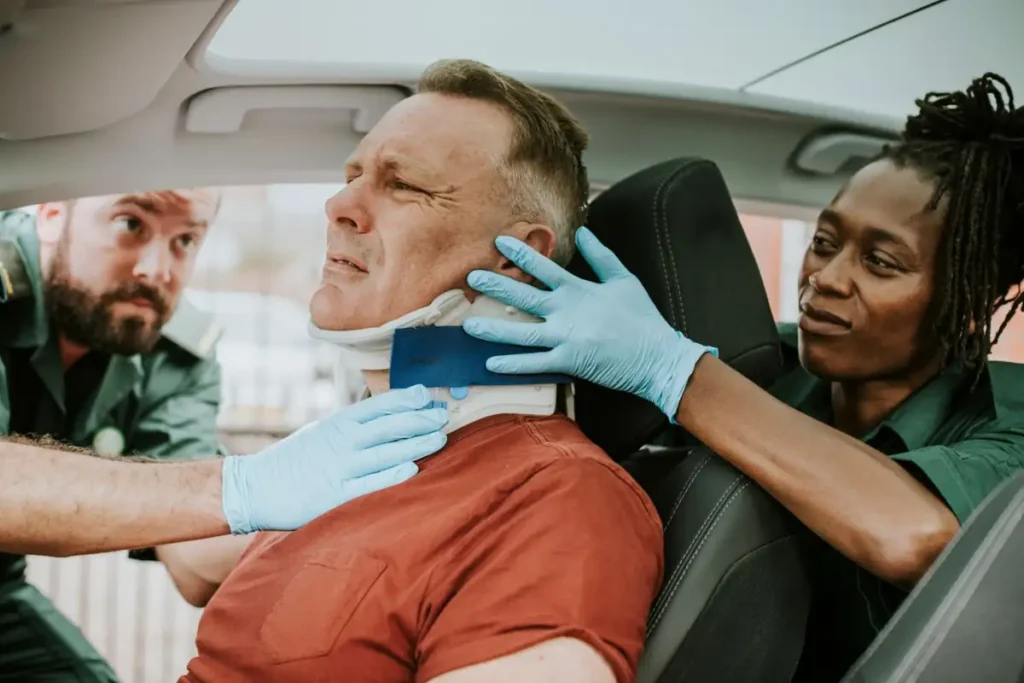Why A Rear-End Car Accident Is More Than A Fender Bender

The common perception of a rear-end collision minimizes its severity, frequently dismissing it as a mere “fender bender.” This term suggests a minor incident involving little more than cosmetic scratches to a vehicle’s bumper, an inconvenient but ultimately harmless event. However, this cultural shorthand can be dangerously misleading. The reality is that the forces involved in a rear-impact crash, even at low speeds, can transmit significant energy through the vehicles and, most critically, into the bodies of their occupants.
Dismissing such an event without a thorough professional and medical evaluation can have serious long-term consequences for an individual’s health and financial well-being. Understanding the true potential for injury and the complex legal and insurance issues that follow is crucial for anyone involved in such a collision.
Read on to learn why a rear-end car accident is more than a fender bender.
Contents
The Hidden Dangers of Whiplash and Soft Tissue Injuries
The most common injury associated with rear-end collisions is whiplash, a term that itself is typically underestimated. Whiplash can be a complex injury involving the muscles, ligaments, tendons, and discs in the neck and upper spine. The rapid hyperextension and hyperflexion of the neck can cause micro-tears in these soft tissues, leading to inflammation, stiffness, and significant pain.
The insidious nature of soft tissue injuries is that their symptoms frequently don’t present immediately. The adrenaline and shock following an accident can mask pain for hours or even days. When symptoms like headaches, blurred vision, dizziness, shoulder pain, and limited range of motion finally emerge, the injury has typically worsened.
Furthermore, these injuries don’t appear on standard diagnostic tests like X-rays, making them difficult to prove to insurance companies predisposed to minimize claims. Without meticulous medical documentation and expert testimony, victims can struggle to secure the compensation needed for ongoing physical therapy and treatment, which can last for months or become a chronic condition. Therefore, for those seeking guidance in the aftermath of such a complex event in Utah and other similar locations, consulting a leading personal injury attorney in Utah can provide essential clarity on legal rights and next steps.
The Potential for Severe and Life-Altering Injuries

While whiplash is prevalent, the potential for catastrophic injury in a rear-end accident can be very real. The severity depends on multiple factors, including the speed differential between the vehicles, the size and weight of the vehicles involved, and the positioning of the occupant. Below are some life-altering injuries to consider:
Traumatic Brain Injuries (TBI)
The whipping motion of the head can cause the brain to impact the inside of the skull, leading to a concussion or more severe TBI. Even without a direct head strike, the acceleration-deceleration force can be sufficient to cause lasting cognitive, sensory, and psychological issues.
Spinal and Disc Injuries
The immense pressure placed on the spine during the collision can lead to herniated or ruptured discs, vertebral fractures, or nerve damage. These injuries can be excruciatingly painful and may require invasive surgical intervention, such as spinal fusion, leading to permanent limitations.
Chest and Thoracic Injuries
Drivers who have their feet on the brake pedal at the moment of impact can sustain serious foot and ankle injuries from forced compression. The seatbelt, while lifesaving, can also cause bruising, sternum fractures, or internal organ damage from the restraining force.
Psychological Trauma
The sudden, violent, and unexpected nature of being hit from behind can be a profoundly frightening experience. Many victims develop post-traumatic stress disorder (PTSD), anxiety, and a lasting fear of driving or being in a vehicle, which can impair their daily lives and livelihoods.
The Complexities of Liability and Legal Recourse
Establishing fault in a rear-end collision seems straightforward, and the driver who struck the vehicle in front is typically presumed to be at fault. This presumption is based on the fundamental rule of the road that drivers must maintain a safe following distance and operate their vehicle with due care to avoid colliding with traffic ahead. However, this isn’t an absolute rule.
Complex scenarios can shift or share liability. For instance, if a driver’s brake lights malfunction, they reverse suddenly, or a third vehicle causes a chain-reaction pile-up, determining negligence becomes more complicated. Insurance companies are adept at exploiting these complexities to reduce their payout. They may argue comparative negligence, claiming the front driver stopped too abruptly or was partially responsible, to diminish the value of a claim.
Additionally, the symptoms of a serious injury can evolve, and the full financial impact, including future medical bills, lost earning capacity, and long-term pain and suffering must be accurately projected to ensure a settlement is truly fair. Navigating these legal and insurance hurdles requires a strategic approach to evidence gathering, medical testimony, and skilled negotiation.
The Importance of a Proactive Response
The actions taken immediately following a rear-end collision are critical. Even if the damage appears minor, seeking a comprehensive medical evaluation is the first and most important step. This documents a direct link between the accident and any injuries. Photographing the scene, vehicle damage, and any visible injuries and collecting contact information from witnesses can create a vital evidence trail.
Given the high stakes involved, treating a rear-end accident as a significant event is imperative. From the hidden onset of whiplash to the potential for life-altering trauma, the consequences extend far beyond a dented bumper. Protecting one’s health and legal rights demands a serious, informed response to ensure recovery isn’t undermined by the initial misperception of a simple fender bender.
Conclusion
Ultimately, the term “fender bender” can be a dangerous misnomer that minimizes the very real physical, financial, and emotional trauma a rear-end collision can inflict. The forces involved can cause debilitating injuries with lasting consequences. By keeping the information mentioned above in mind, victims can prioritize their health and understand the full scope of the challenges they may face.



